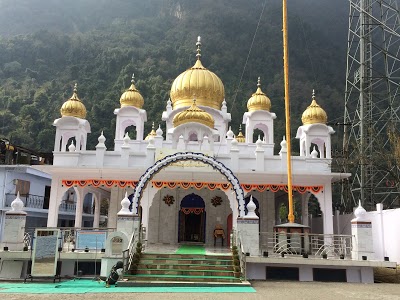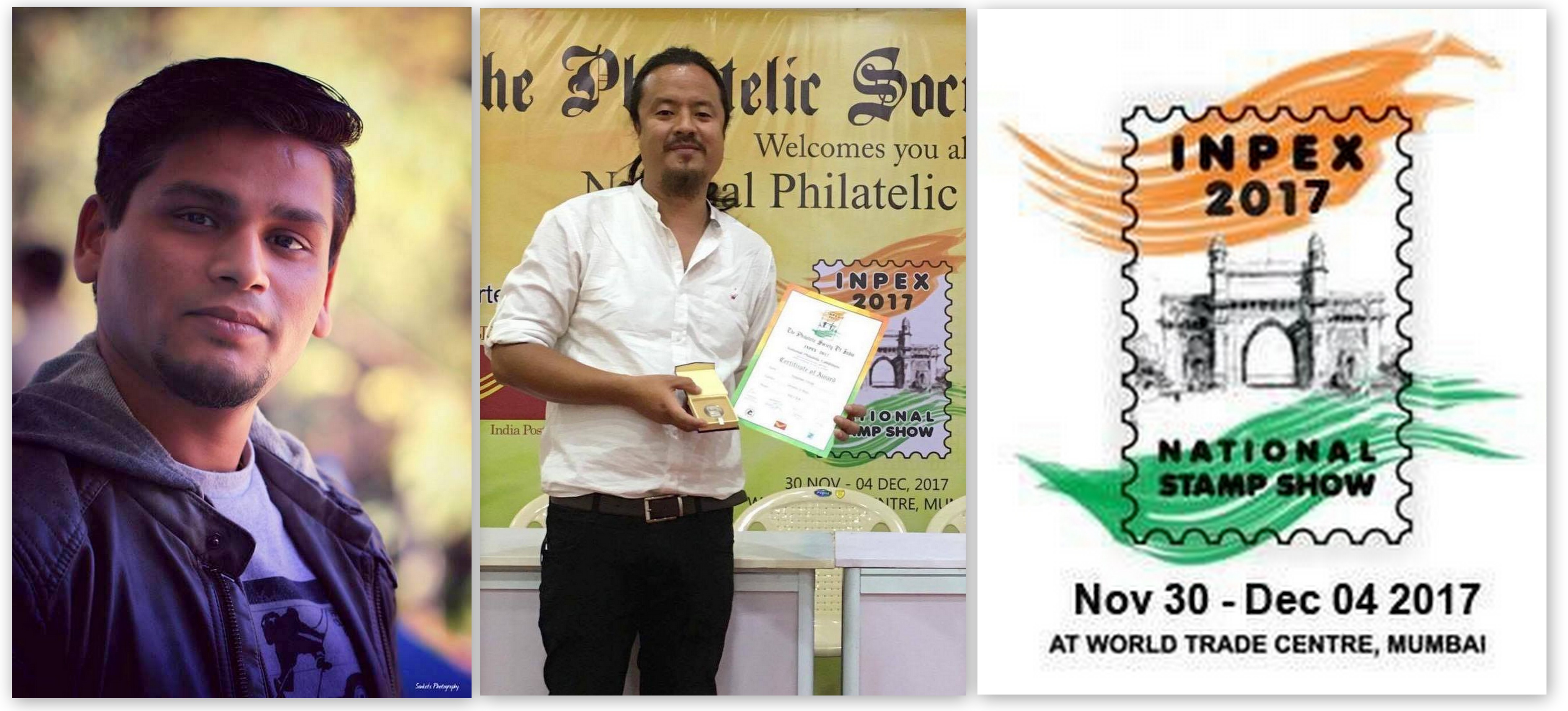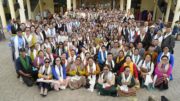Last week, Facebook pages such as Talk Sikkim and Sikkim Tribune shared a news report (although both these pages have not mentioned the news sources) on how “According to information shared by the DSGMC’s General Secretary Manjinder Singh Sirsa, the Indian President, Sri Ram Nath Kovind, has directed the Sikkim Government to take necessary steps to ensure the security and existence of Gurudwara Guru Dangmaar Sahib” [sic]. Turned out this report was simply a copy-pasted piece from one Sikh24.com website and has not been reported by any other news portals or media, putting into question the authenticity of this piece. On one hand, one could have easily ignored it but because this piece touches upon the contentious issue of Sikh claims on the scared spaces of the Buddhist in North Sikkim, some deliberation on this is a must. Moreover, such reports remain in the public domain for a long time and accessible to people all over the world projecting a very dangerous, one-sided skewed narrative of Sikkim and it’s people.
What I found most offensive in news reported was the use of the term “Buddhist fanatics” to refer to the people of Sikkim, which to my dismay, none of the two portals – Talk Sikkim and Sikkim Tribune – have critiqued nor questioned. The post quotes “…Buddhist fanatics had forcibly removed the Holy Scriptures of Guru Granth Sahib… and attempted to convert it into a Buddhist prayer place” [sic]. As I read the write-up, I could not help but recall a conversation that I had with one of the local residents of Chungthang in North Sikkim way back in 2015. Halfway through a research interview, a local woman had out of the blue commented “You ask me about the history of this place but our history is being re-written by them. We are just mute spectators to this distortion of our own place and our history. You know… they now call it Changi Than.”
Locals there, comprising of the Lepchas and Bhutia Lachenpas/Lachungpas sadly lamented that what was initially established as a small “sarva dharma sthal” after the entry of 17th Assam Rifles in Chungthang in 1963, has today taken the shape of a gigantic concrete Gurudwara in the heart of Chungthang. Although the Assam Rifles, in general, represents(ed) no religious affiliations, it is locally (and unanimously) reported that under the request and instructions of a Sikh Subedar – G. S. Bhullar of the 17th Assam Rifles, the locals allowed a small space in Chungthang to accommodate the religious sentiments of these defence personnel’s in the 1980s.
It is important to note that, Sikkim despite being a sovereign Kingdom until 1975 had all its defence and communication-related development activities managed by the Government of India than by the then Chogyals. Given Sikkim’s strategic geopolitical location bordering Tibet (China) and imminent threats to India emanating from China post-1960s, the process of securing these vulnerable, border areas had become Government of India’s top priority since 1960s i.e. after the two Indo-China Wars of 1962 and 1967. Therefore, more and more enclaves of Assam Rifles as well as Army were sent to Chungthang and the areas lying above this valley village – Lachen and Lachung. And with them, came in their religious affiliations and their own agendas – putting into motion a gradual, unassuming process of HISTORICAL, RELIGIOUS AND CULTURAL APPROPRIATION of North Sikkim.
Sikkim in general and North Sikkim in particularly is overwhelmingly imbued in rich religious history, sacred sites and artifacts of Guru Rinpoche – one that has been a part of the socio-cultural and religious heritage, and identity of not only the people of Sikkim but also that of all the communities living in the Himalaya – including the neighbouring Darjeeling, Bhutan, Nepal and Tibet.
It is believed that Guru Rinpoche, also referred to as Guru Padmasambhava, had travelled through Sikkim, fighting and subjugating local demons. Chungthang in North Sikkim is considered a prominent landmark where Guru Rinpoche had subjugated a local demon, leaving behind footprints of this encounter on a rock. This rock with Guru Rinpoche’s foot imprints in Chungthang, referred to as Lhedo/Nhedo in Bhutia language is highly revered as a sacred and historical site for pilgrimage by the Buddhists as well as people of all faith living in the Himalayan belt. A perennial spring of water –Thui – originates from this rock and mountain dwellers from far away places visit Chungthang for this holy water. There are many other miraculous beliefs, stories, sites and artifacts of Guru Rinpoche associated with Chungthang and the surrounding regions. It is worth mentioning that a few meters away from the scared rock, there is a “chilaune” tree (Schima wallichii) referred to as “Sumrang”, that is believed to have grown from Guru Rinpoche’s walking stick left behind in Chungthang. What is unique about this “lone” tree – as reported by the locals here is that this tree doesn’t grow anyway else in Chungthang, and as far as the living memory of the locals are considered this tree has been there forever, hence considered a miracle.
Today most of Guru Rinpoche’s scared legacy and with it, the religious sentiments, beliefs and reverence that people of Sikkim associate with him remains distorted. Chungthang has become “Changi Than” – translating to “beautiful place” in Punjabi. This name has been given and promoted by the Sikh people residing there for the past few decades under the pretext of taking care of the Gurudwara. Originally referred to as “Tsemo Rinchen Thang” meaning “meadow of the Goddess Dorje Phalemo”, over time the etymology of this valley village transitioned to “Tsungthang” and much later, to its current state i.e. Chungthang, where Chung means “small” and Thang means “meadow” or “flat land” in Bhutia language. It must be noted that it was a common practice across Sikkim’s mountainous geography to use the term “thang” as a suffix to denote the names of several levelled or flat places. There is no dearth of similar sounding place names across the State such as Muguthang, Gnathang, Yumthang, Sherathang, Arithang, Gerethang, Munshithang, Jorethang, Ambithang, Asangthang, Deothang, Namthang, Jakthang, etc, etc, which is indicative of the fact that the very word “thang” is unique to this Himalayan region.
In addition, the small “sarva dharma sthal” built in the 1980s under Bhullar in Chungthang, has transitioned into a gigantic Gurudwara named Gurudwara Lama Nanak Sahib. Guru Rinpoche has been made Guru Nanak Dev Ji and now the two Guru’s are considered the same. Thui from Lhedo/Nhedo has become “amrit ”. Sumrang originating from Guru Rinpoche’s walking stick has become “Khundi Sahib” of Guru Nanak.
In short, Chungthang’s unique history interwoven with Guru Rinpoche’s legacy has today been appropriated by the Sikhs, which flourished and perhaps received support and encouragement under the patronage of certain defence personnel. Guru Rinpoche’s history has been blatantly tampered with and in doing so, the religious sentiments and the very histories of the locals who are indigenous to the region have been completely disregarded.
When the entourage of our Army started to get mobilized in Sikkim post 1960’s, many in the Indian Army, including higher Officials, mid-ranking officers and ordinary soldiers were Sikh men i.e. followers of Guru Nanak and THIS, according to the locals has today given rise to a peculiar, unpalatable sets of “false” claims and assertions. Could this simply be an error arising out of the common usage of the term “Guru” by these absolutely distinct religions? Could this be an incorrect interpretation of the religious history and legacy of Guru Rinpoche – despite being documented in various texts and scriptures since the 8th century AD? Or could this be a classic case of “historical appropriation” planned and executed by some individuals in our own Army to “Indianise” Sikkim’s landscape – a landscape that has a well known history of being a sovereign Kingdom, a history of sharing common borders and trade activities with Tibet (China) and a contested 1975 merger/annexation historical narrative with India – with a religion that does not have any precedence, history, nor followers in the concerned landscape?
It appears that the beginning of appropriation of Chungthang’s historical and religiously revered Lepcha landscapes parallels the appropriation of the equally sacred Bhutia landscape of Gurudongmar as early as the 1980s by these defence personnel. According to local accounts, when our Army started entering these Bhutia-Lepcha landscapes of North Sikkim to guard these border regions from Chinese threats/invasions, in 1971 Captain Dalwir Singh Grewal with the Indian Army had travelled to Gurudongmar lake. This first visit of Grewal to Gurudongmar located at an altitude of 18000 feet in Lachen (while Sikkim was still a sovereign Kingdom) gave him first-hand local knowledge about the religious, historical and cultural significance of Gurudongmar lake associated with Guru Rinpoche. It was this first-hand local account of Guru Rinpoche’s miraculous legacy, that was for a decade cleverly twisted, conceptualized and repackaged to fit in the Guru Nanak angle. This is why, in the late 1980’s, after Grewal’s elevation from Captain to Lieutenant Colonel, the first step to placing “some structure” signifying a Gurudwara in an absolutely pristine sacred Gurudongmar lake was initiated under him – 1987 to be specific. Similarly, Chungthang also witnessed a “structure”, however small it may have been then, but under Bhullar during the same time.
However, it was not until the late 1990’s, that Grewal’s narrative started to take concrete shape and action – “shocking” the local people of these regions. In 1997, P.P.S. Bindra, the then GOC in Sikkim, constructed a permanent cemented structure as a Gurudwara in Gurudongmar and named it Gurudwara Guru Dangmaar Sahib; and in the process, demolished an existing old stone structure – the Sangphur. Sangphur was the place where the locals of this region have for centuries burnt incense sticks/herbs in reverence and worship of Guru Rinpoche as well as the local deities that abode the sacred lake and the surrounding mountains. Completely disregarding the existing sacred sites, sacred artifacts and scared spaces that the indigenous Lachenpas and Lachungpas had worshipped for centuries, which they continue to do, Bindra conveniently usurped and appropriated those sacred Buddhist places/spaces by creating a Gurudwara in Gurudongmar.
As if, cementing a “Gurudwara” structure was not enough, information boards post 1997 were put up – one that displayed and thus, propagated an altogether different history on how it was Guru Nanak Sahib created the sacred lake of Gurudongmar in the 16th century AD with the help of his Dang (walking stick) in response to a “shepherds” plea to solving water scarcity in the region. The pamphlets, distributed from Gurudwara Lama Nanak Sahib in Chungthang (to this day) says “On hearing their plight, Guru Sahib took out his walking stick (Dang) and touched the frozen lake with it, the area melted into water and has not frozen ever since… After this miraculous event, the lake came to be known as Guru Dangmaar lake” [sic].
This way, much like Changi than; Gurudongmar became Gurudangmaar. It is said that the names of place(s) and its embedded meanings reveal many aspects of the history, culture, ethnic-underpinnings, and language, including characteristics of not only those very places but also the people who dwell there. In changing the names of these places to align with the recently created “false” narrative, those propagating and supporting these changes (in whatever capacity) have threatened and questioned the history of the people who live there. All these acts point out to how blatantly the beliefs, histories and sentiments of the minority, indigenous locals inhabiting these concerned regions for centuries as well as those in the rest of Sikkim associated with the scared landscape imbued by the legacy of one of the most revered figures in Buddhism have been completely disregarded.
Now the question of intrigue is, by whom?
Was it the Sikh communities (not just the ones present in Sikkim but also outside Sikkim, across India and world over) who have been made to convincingly believe the line-of-thoughts conceptualized and propagated by Grewal? Was it the Indian establishment, under whose command, these high ranking officials made way to these sensitive border areas under the pretext of national security but ended up contesting the local histories and local claims, (re)creating their version of new histories and claims? Should the Indian Army, which is considered to be neutral – above religion, above politics, above caste and class – have allowed for such activities at the hands of their servicing personnel’s in the garb of national security? Can similar claims and distortions be made in other Himalayan regions such as Jammu and Kashmir that remains predominated by Muslims? Or is there a greater “invisible hand” and blessings of the higher powers – Government of India, or our security apparatus?
Looking back, the kindness with which the locals of Lachen, Lachung and Chungthang have accommodated the religious sentiments and aspirations of our defence personnel be it the Indian Army or the Assam Rifles in the past, has today earned them the tag of “Buddhist fanatics”. Can one not speak out against the tyranny of aggressive historical-religious-cultural appropriation? Should one not raise their voices of protest to protect their land and their history, identity and culture that is imbued with the land? Over the years numerous dedicated Sikh websites have propped up that continuously and zealously promotes and propagate these “false” claims. Educated locals of Chungthang/Lachen/Lachung have endlessly contested and refuted such claims made on these websites but to no avail. It is then no surprise that the scathing unverified report of how the President of India directed the Government of Sikkim to secure Gurudwara from “Buddhist fanatics” first appeared on one suspicious/unknown website called Sikh24.com. Further, the zeal and aggressiveness with which the Gurudwara supporters continue to assert their new claims on the Bhutia-Lepcha lands are threatening. It is intriguing how after the 2011 earthquake that rocked Sikkim, which, in particular, caused huge devastation in North Sikkim, a grander, a much bigger Gurudwara structure was again constructed in Chungthang from the rubbles left behind by the earthquake in no time, while the local monasteries awaited renovation for years. Where and how do the funds for such construction and maintenance come from? On what pretext do the funds come in the first place? Is it because of their “false” narrative?
Given all of these events, for the past couple of years, locals from Chungthang to Lachen to Lachung have been protesting against these illegal constructions of structures that are conveniently given a religious affiliation and made into a religious site. In addition to all the names and distorted history, in Chungthang the locals are also raising their voices against the illegal encroaching of Monastery Area by the ever-expanding Gurudwara structure. The Lachenpas of Lachen continues to tirelessly fight against the illegal Gurudwara in Gurudongmar. More than the disregard for the historical facts, these ongoing appropriation of the place itself and by extension it’s people have gravely violated locals TRUST that was bestowed on those very people who first entered the region under the pretext of securing the border fronts. Not to forget their deliberate violations of the Forest Conservation Act (1980); the Environment Protection Act (1986) and Wildlife Protection Act (1972) in their attempt to establish the Gurudwara.
Today as a legal case is fought in the Gangtok High Court between some Sri Guru Singh Sabha vs. The State of Sikkim & Ors to settle the dispute that has cropped out of these false claims and counter-claims; today as I read unverified news on social media going viral that talks about the President of India already speaking up in favour of the Gurudwaras; today as I reflect on my short stay in North Sikkim and try to understand the history of these places and it’s people – a deep fear is taking shape in my heart.
A fear of how concocted lies turn into false claims, how false claims turn into alternative claim, how alternative claim turns into half-truth, how half truth turn into a disputed facts and how eventually disputed facts turns into controversial historical facts – meaning, a lie ultimately becomes a historical fact through the cycle of constant assertion and re-assertions.
My solidarity with the people of Lachen, Lachung and Chungthang that are today at the crossroads of this grave distortion and appropriation, one that has yet not caught the curiosity, the interest nor the concerns of the greater mass across Sikkim. I implore the people of Sikkim to only look at Darjeeling, your neighbour across the Teesta, whose history, identity and whose very existence have been systematically and systemically appropriated by West Bengal. Look at us and our places – Sila-gadi became Siliguri, Tilak Maidan (named after Tilak Bahadur Rai) became Kanchenjunga Stadium, Jalpai-gadi became Jalpaiguri and so on. Today we are considered to be “immigrants” in our own land.
All that appropriation began, with simple name changes.
*Rinchu D. Dukpa edits The Darjeeling Chronicle and is editor-at-large at www.darjeelingtimes.com






Leave a comment